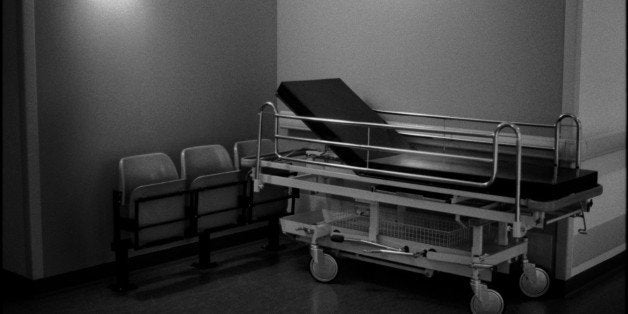
This month, two very public medical cases were making waves throughout the headlines. One is about a woman who wants to choose her dying date. Brittany Maynard (29), who is battling with stage 4 Glioblastoma, one of the deadliest forms of brain cancer, has scheduled the end of her life for November 1, 2014, the day after her husband's birthday. Her reason is that she wants a less painful, less tormenting exit from a disease she knows she cannot beat. Only three states allow her to do this, so Brittany and her family moved to Oregon. No less passionate is the debate on Jahi McMath (13) from California. Upon being pronounced dead after a routine tonsil and adenoid removal surgery to treat sleep apnea at Oakland Children's Hospital last year, Jahi has been kept on life support by her mother. Since California doesn't allow keeping a legally brain dead patient on such support, she was moved to New Jersey by her family. The mother continues to claim that her daughter is "still in there and not brain dead," providing alleged new evidence in a video that went viral within hours.
In a time where medicine allows us to determine our own death or to keep a dead loved one alive, how far do we want to go? The debate in both cases is highly charged with emotional and moral undertones. In the widespread video about Brittany Maynard's choice, soft piano music and childhood memories shared by her tearful mother make it hard to view her case with a sober, rational eye. The same is true for the "miracle" video about Jahi McMath featuring the voice of her mother asking her lifeless daughter to move her hands and feet. When spontaneous movements typical for brain-dead patients on life support occur, she cheers Jahi on with great enthusiasm.
As a woman and a human being, I empathize with both stories. However, as a medical professional, I am led to look at the facts and have been surprised with the lack of medical knowledge in all of this media coverage. Take, for instance, the headlines in Jahi McMath's case, stating that she "responds" to her mother's voice by "moving her hands and feet when prompted." From a medical viewpoint, these are misleading statements. It is widely known in the medical field that brain-dead patients show spontaneous movements such as jerking of fingers or bending of toes that can be disturbing or misleading to family members. Such movements have even caused health care professionals to question the brain-death diagnosis. One study published by the American Academy of Neurology in 2000 suggests that 39 percent of brain-dead patients were showing such movements even hours after being removed from life support. It is important to understand that these movements, however shocking to watch, are spinal reflexes and have nothing to do with brain activity. In Jahi's case, her vital organs continue to function by way of life support. This means that such reflexes are very likely to be manifested in her hands and feet. Note that at no point in the video, does the mother ask her to raise an eyebrow, smile or show any movement other than in her hands and feet.
In Brittany Maynard's case, the public debate is rife with moral judgment and "what-ifs." Hinting at her self-appointed dying date of November 1st , several social media commenters ask, what if the cure for her disease materializes on November 2nd ? Or, even more speculative, what if God has a miracle healing in store for her on a later date? Despite Brittany Maynard's claim in an interviews that "there is not a cell in my body that is suicidal," her choice is viewed as a suicide and judged accordingly based on the moral worldview of those commenting. Try to put aside the emotional undertones in the Brittany Maynard video, and you will meet a woman who loves life and has simply come to terms with the crushing reality that there is no cure for her disease. From a medical perspective, this leaves her with two choices: she can either wait for certain death to occur while on palliative care as the disease takes its course, or, thanks to the "death with dignity" law in a state like Oregon, determine her own date of death and avoid further pain and suffering. It is her personal commitment to the "death with dignity" cause that has led Brittany Maynard to go public.
Many comments suggest that we in the medical field are "playing God" or challenging some higher order of things when we provide a deadly diagnosis to a patient or weigh in on their chances of survival. Medicine is a science unlike any other, as all its study is continually informed and challenged by an ever-growing multitude of practical experiences. Presented with a stage 4 Glioblastoma as in Brittany Maynard's case, any judgment by a medical specialist will have to reflect the reality that this disease ends in death for virtually every diagnosed patient within a relatively short period of time. In the same way, any experienced physician will view the Jahi McMath video with professional skepticism for the reasons mentioned above.
As for the religious and moral underpinning over both cases, I am thankful to live in a society where such beliefs can be freely developed and expressed. My hope as a health care professional is for a higher commitment to public awareness and a deeper understanding of how the human body works.